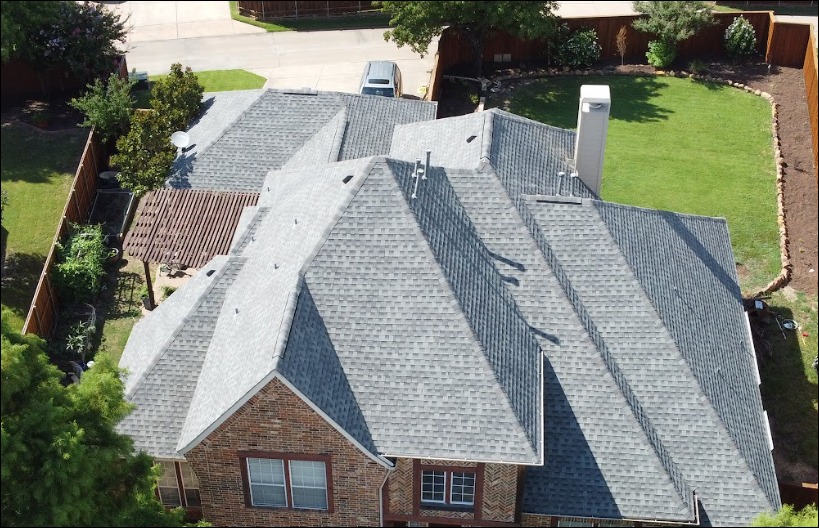When disaster strikes and your roof is compromised, immediate action is essential to safeguard your property, protect your family, and minimize costly damage. From heavy storms and hail to falling debris or sudden structural failure, emergency roof repairs demand a swift, strategic response. Here, we provide a detailed guide to help homeowners handle urgent roofing issues with clarity and confidence.
How to Identify a Roofing Emergency
A roofing emergency doesn’t always come with a dramatic collapse. Sometimes, the signs are subtle but urgent.
- Persistent Water Leaks
Leaks that cause visible water spots on ceilings or walls, especially during or after a storm, suggest damage that needs immediate inspection. - Storm Damage
Wind can rip off shingles or flashing, while hail can crack or puncture roofing materials, leading to vulnerability and leaks. - Visible Structural Deformities
Sagging areas, buckling, or sections that appear uneven may indicate a compromised support system and require urgent evaluation. - Debris Impact
Fallen tree limbs or other heavy debris often result in punctures or structural damage that need emergency sealing or replacement.
What to Do First: Emergency Roof Action Plan
Time is critical. A step-by-step approach helps reduce further damage and aligns your actions with insurance protocols.
1. Ensure Safety First
Avoid climbing on the roof. Water and damage can make surfaces slippery and dangerous. Instead, address the interior:
- Relocate electronics and valuables.
- Use buckets or containers to catch dripping water.
- Turn off electricity in affected areas.
2. Document the Damage
Use your phone to take clear photos and videos of all affected areas:
- Interior water stains
- Exterior damage (shingles, gutters, visible holes)
- Debris on the roof or around the home
Thorough documentation is key for filing insurance claims and validating repair needs.
3. Contact Emergency Roofing Services
Call a licensed and insured roofing professional specializing in emergency response. Explain the situation, share documentation, and request a temporary cover if full repairs can’t begin immediately.
Temporary Measures to Prevent Further Damage
While waiting for professional help, there are a few proven methods to prevent the situation from worsening:
- Tarp Installation
Heavy-duty waterproof tarps can cover the affected section, preventing rain from entering. Secure them tightly with wood boards and nails around the perimeter. - Roofing Cement or Sealant
For small holes or cracks, temporary patches using roofing tar or sealant may slow leakage. - Drainage Control
Clear out gutters and downspouts to ensure water flows off the roof correctly and doesn’t pool or seep into weak areas.
Navigating Insurance Claims for Emergency Roof Repairs
Your homeowner’s insurance policy may cover emergency roof damage depending on the cause (typically wind, hail, or fallen trees). Here’s how to get it processed effectively:
- Step 1: Call Your Insurer Immediately
Notify your provider of the incident. Ask for guidance on claim documentation and timelines. - Step 2: Get a Professional Inspection and Report
Have a certified roofer inspect the damage and create a written report with photographic evidence. - Step 3: File a Claim
Submit your evidence and contractor’s report to the insurance company. Many roofers will work directly with your insurer, easing the claims process.
Long-Term Strategies: Preventing Future Roofing Emergencies
Emergency repairs are stressful and costly. Proactive maintenance ensures your roof stands strong against the unexpected.
Schedule Bi-Annual Roof Inspections
Spring and fall are ideal times to check for minor issues like loose flashing, broken shingles, or pooling water. Small fixes prevent bigger problems later.
Replace Damaged Materials Immediately
A missing shingle might seem minor, but it exposes your underlayment to the elements. Prompt repairs stop minor issues from escalating.
Keep Gutters Clean
Clogged gutters cause water to back up onto the roof, increasing the risk of leaks and ice damming in winter. Clean gutters quarterly or install gutter guards.
Trim Overhanging Branches
Branches scraping against your roof can damage shingles and increase debris. Severe winds may cause limbs to break and fall onto the roof.
Choosing the Right Roofing Company for Emergencies
Not all roofers are equipped for emergency work. Look for:
- 24/7 availability
- Proven local reputation
- Licensed, bonded, and insured teams
- Storm damage experience
- Ability to assist with insurance claims
One trusted provider of emergency roofing in Denver is Tried and True Roofing, known for rapid response and expert repairs across the city and surrounding neighborhoods.
Signs You May Need a Full Roof Replacement
Emergency roof repair can extend the life of your system, but in some cases, a full replacement is the safer, more cost-effective solution:
- Repeated leaks in different areas
- Severe structural issues
- Over 20 years of roof age
- Widespread mold or rot in the decking
A detailed inspection will determine whether repairs are sufficient or replacement is necessary.
Common Emergency Roofing Questions Answered
How fast should I respond to roof damage?
Immediately. Waiting increases the chance of structural damage, mold, and cost escalation.
Can I patch the roof myself?
DIY tarping may be safe from the ground or attic, but climbing onto a damaged roof is never advised. Leave the work to professionals.
Will insurance cover emergency repairs?
It depends on the policy and the cause. Weather-related damages typically qualify, but gradual wear-and-tear does not.
Conclusion
Emergencies don’t wait. Whether it’s a leaking roof during a thunderstorm or major structural compromise from fallen debris, knowing how to act decisively can protect your property and finances. A well-prepared homeowner understands the signs, takes immediate action, works with licensed roofers in Denver, and prioritizes regular maintenance to prevent recurring issues. With proper preparation, prompt response, and professional support, your home can weather any storm.
